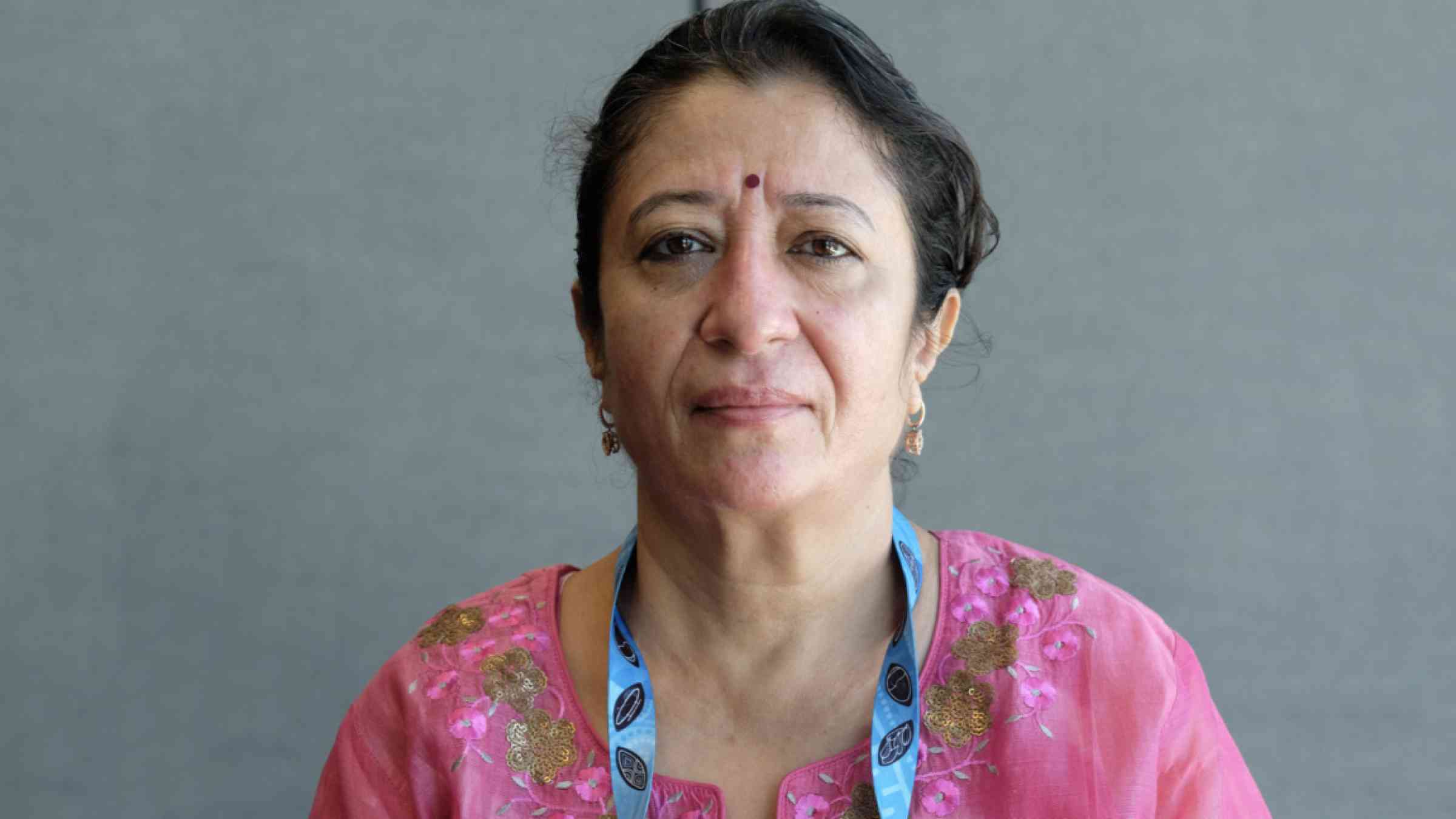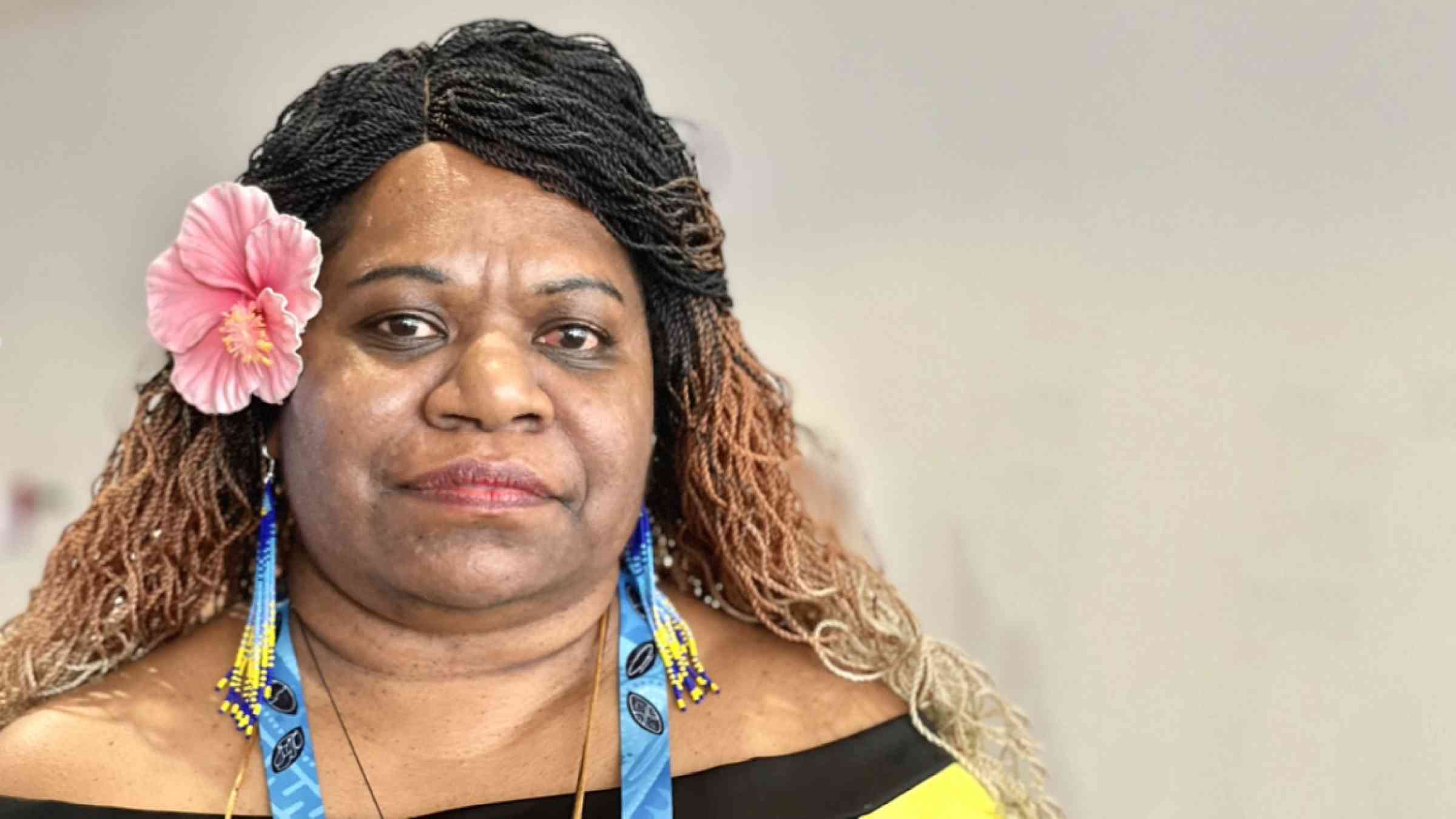Women leaders forge change to reduce disaster risk for all

On International Women’s Day 2023, we celebrate those who are forging women’s equality in all walks of life.
Countries in Asia and the Pacific face the highest levels of disaster risk in the world. Addressing this challenge requires a collective effort and an all-of-society and all-of-government approach. Women across Asia and the Pacific are making an important contribution to understanding, preventing and reducing disaster risk. They bring an awareness of how gender inequality compounds disaster risk and they know what needs to be done at community and national level to empower women and improve resilience for all.
The three women leaders profiled here are from India, New Zealand and Vanuatu. They are transforming disaster risk reduction planning and implementation to make it more gender responsive and inclusive and therefore more effective. Their stories reflect the diversity of solutions needed to address the converging challenges of climate change and disaster risk in the Asia-Pacific region. The three women are a small group among many committed and passionate women working to save lives and livelihoods and inspire others to advance disaster risk reduction.
Socially constructed vulnerabilities
“We are seeing the impact of climate change and disasters like flooding more and more,” says Bijal Brahmbhatt who is the Executive Director of the NGO Mahila Housing Trust in India. “When houses in poor communities are flooded, people climb onto the roof to save their lives. It is the women who then go down to clean up the muck after the water recedes. Many women die after floods because there are snakes in the mud and debris and they get bitten while cleaning up.”

This is just one example of how differently women and girls are affected by disasters. Social and cultural roles and norms shape vulnerabilities and exposure to natural hazards.
Bijal is a pioneer in recognising that climate shocks and stresses for the poor are mediated by the housing and living condition in which they live, and that they are forced to absorb losses and damage caused by climate variability, which pushes them into poverty and limits their capacity to adapt.
“We realized that housing for women in poorer communities was often impacted by disasters because it was located in low-lying, vulnerable areas,” says Bijal.
Early in her career, Bijal identified that building resilience requires action at all levels of society, from individuals to organizations, from academics, market-based solution providers, local, state and national governments and international bodies.
In 2015, Mahila Housing Trust began integrating climate change-related shocks into its disaster programme. These include heat waves, flooding and inundation, water scarcity and increased climate change-related incidence of water- and vector-borne diseases in 100 slums in seven cities in three South Asian countries. The Mahila Housing Trust has since strengthened the resilience of women in more than 30,000 families across South Asia and supported 1,650 female community leaders.
“We need to work more on integrating disaster risk reduction, climate change, women's empowerment and sustainable development,” Bijal says. “We need to develop women leaders to support good governance and disruptive collaborations with the market.”
Driving a more comprehensive approach to reducing disaster risk
“Disaster risk reduction is becoming more people-focused and socially engaging,” says Jane Rovins who works for New Zealand’s National Emergency Management Agency (NEMA). “We are seeing disaster risk reduction that is focused on the uniqueness of the community, not a one-size-fits-all solution. As women drive more disaster management activities, we are seeing a more comprehensive approach to reducing disaster risk.”

Jane leads the new International Engagement Team at NEMA. She and her team bring the voice of New Zealand’s Government lead for emergency management to the world and bring the lessons from Asia and the Pacific back to New Zealand. The team also includes the Pacific Disaster Management Programme, which provides technical and programme management assistance to the five Pacific Island nations Tonga, Samoa, Cook Islands, Tokelau and Niue.
“Our communities are diverse and it is vital that their voices are represented in disaster risk reduction,” she says. “We need solutions that are not just fit-for-purpose but fit-for-community. Everyone brings their unique perspective to disaster risk reduction and we need to use this range of perspectives to find creative solutions to the complex problems we face.”
Empowering women as community mobilizers
“We started working with women in the three islands of Erromango, Eton and Tanna,” says Flora Vano who leads ActionAid’s women-led localised response to disasters in Vanuatu. “We met these women when they had been badly hit by tropical cyclone Pam and lost their livelihoods, struggling to feed themselves, traumatised and just trying to survive.”

Through the Women I TokTok Tugeta (WITTT) forums, ActionAid Vanuatu was able to engage women to learn more about disaster risk reduction by first conducting women-led community-based protection assessments and identifying their priorities, followed by an action plan. “Food insecurity, lack of safe cyclone houses, access to clean water, violence against women, trauma and loss of livelihoods emerged as the key issues.”
Flora works with women with disabilities, indigenous women, widows, single mothers and marginalised fisher folk women who face inequalities even before a hazard strikes. “They are at the forefront of disaster risk reduction and it is important to involve them in decision-making and understand their complex situations to ensure that the whole community is included.”
“Women, through their collective agency, are able to mobilise their communities to prepare, stockpile food and keep their important personal records safe.”
An entire regional network
The three profiled women are all part of the Women's International Network for Disaster Risk Reduction (WIN DRR) – a professional network that supports women working in disaster risk reduction, in all their diversity.
By promoting and supporting women’s leadership, WIN DRR aims to enhance women’s role in decision-making in disaster risk reduction in the Asia-Pacific region. WIN DRR is supported by the United Nations Office for Disaster Risk Reduction (UNDRR) and the Government of Australia.
Are you a woman working in disaster risk reduction and interested in connecting to and learning from your peers in the Asia-Pacific region? Join WIN DRR today by signing up here or learn more about the network on Twitter or LinkedIn.